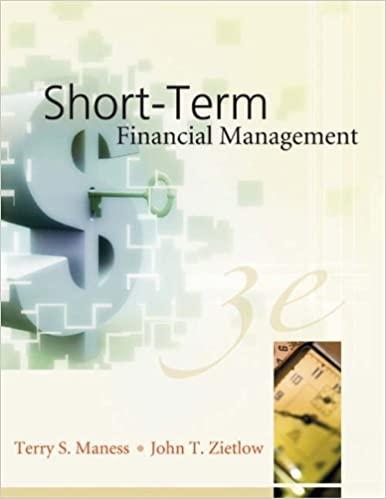Question
You are a young personal financial adviser. Molly, one of your clients approached you for a consultation about her plan to save aside $450,000 for
You are a young personal financial adviser. Molly, one of your clients approached you for a consultation about her plan to save aside $450,000 for her childs higher education in the United States 15 years from now. Molly has a saving of $120,000 and is considering different alternative options:
Investment 1: Investing that $120,000 in savings account for 15 years. There are two banks for her choice. Bank A pays a rate of return of 8.5% annually, compounding semi-annually. Bank B pays a rate of return of 8.45 annually, compounding quarterly.
Investment 2: Putting exactly an equal amount of money into ANZ Investment Fund at the end of each month for 15 years to get 330 000 she still shorts of now. The fund is offering a rate of return 7% per year, compounding monthly.
(1) Calculate the monthly payment Molly needs to contribute into ANZ Investment Fund to get $330,000 after 15 years in Investment 2?
(2) In investment 2, if Molly changes to contribute $1200/month to that super fund at the beginning of each month, how much money she would have in the ANZ Investment fund after 15 years?
(3) Molly is offered an investment that will pay $12 000 each year forever. How much should she pay for this investment if the rate of return 12% applies?
Step by Step Solution
There are 3 Steps involved in it
Step: 1

Get Instant Access to Expert-Tailored Solutions
See step-by-step solutions with expert insights and AI powered tools for academic success
Step: 2

Step: 3

Ace Your Homework with AI
Get the answers you need in no time with our AI-driven, step-by-step assistance
Get Started


